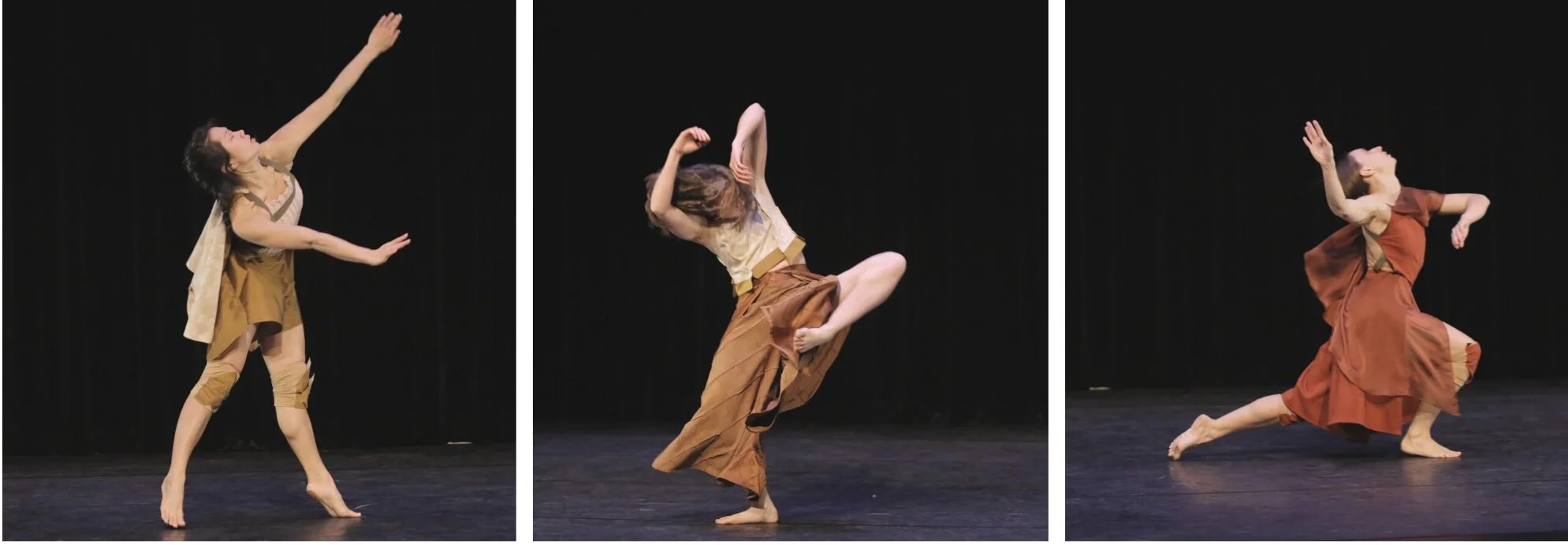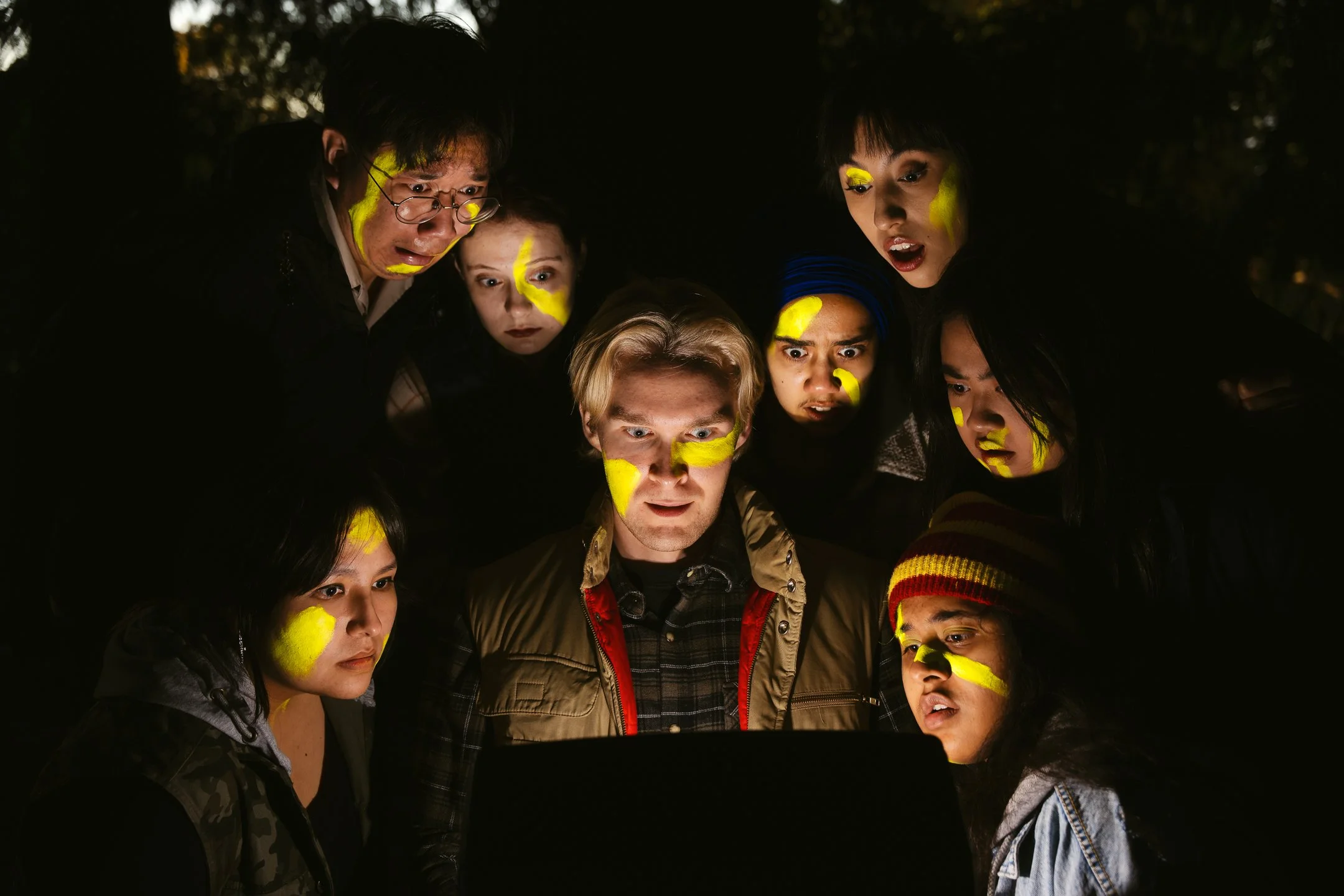DANCE AS AN ANTIDOTE TO ISOLATION IN CO.ERASGA’S SHOW: OFFERING
/Dancer Antonio Somera is onscreen, wearing a yellow tunic with jagged fabric down one arm like feathers. He lunges deeply, shouting into his hands under a shining spotlight. The sheer intensity of the act jolts me out of my thoughts, transforming my living room into a theatre.
Antonio Somera / Yasuhiro Okada
So starts Offering, Co.ERASGA’s live digital performance for their 20th anniversary season. In it, the artistic director Alvin Erasga Tolentino and six dancers look at what dance has to offer a pandemic-stricken world. Can the outward expression of dance be an antidote to an inward-turned society? Can movement be a prayer for the world?
Tolentino explains that “during the pandemic, dancers have been challenged dramatically.” Training and moving together, which is the lifeblood of their work and creative expression, has been taken away completely.
“We started to ask, can movement have another capacity in performance—can it be an offering, a prayer for the things we are suffering from, for the world and for the death of so many people?”
Spirituality and dance have always been closely linked in Tolentino’s work, which embraces the meditative and trance-like experience one feels when focused on their sensation. The Filipino-Canadian artist uses his company to investigate topics of identity, gender and ancestry, borrowing from traditional Asian forms and interpreting them through a contemporary lens.
But when Offering had to be adapted from theatre performance to digital livestream, new questions arose. How could the moving body transcend the medium when performing for a camera?
On the Saturday afternoon of November 28th, I tuned in with 75 other audience members to watch the premiere of Offering. Seven dancers performed one by one on the Anvil Centre stage: Antonio Somera, Marissa Wong, Marc Arboleda, Tolentino in a surprise appearance, Joshua Ongcol, Molly McDermott, and Olivia Shaffer. Though the stage design was bare, the costumes conveyed the atmosphere of a ritual: angular pieces of fabric displayed across the dancers’ bodies, covering a single side, hanging off the back, or draping down in floor-length skirts with slits.
Apart from brief crossovers, the solos were unconnected, each with their own arc of energy and dynamics. But the dancers’ careful attention to the present moment acted as a connecting force—a full, immersive physical expression that drew me in and held the work together.
At times it felt like watching an internal conversation. Colourful circles flash on the stage floor as Somera runs across the stage, this way and that, looking back as if lost or chasing something. We can hear his quickening breath over a whirring industrial soundscape, like a washing machine, building tension. Later, when Wong stands up on her toes, balancing with arms draped by her sides, she seems to reach a moment of resolution before being knocked back by an imaginary wind, folding and scuttling back, only to rise up again. When McDermott makes wide circles onstage, she whispers to herself and gesticulates frantically, reminding me of the strange effects of isolation on the human psyche.
Marissa Wong, Molly McDermott, and Olivia Shaffer / Yasuhiro Okada
The movement is exceptionally fluid and grounded—the dancers spiral down to the floor and into jumps with apparent ease. But there are moments where we see the effects of their exertion. In Schaffer’s solo, after pushing herself nearly to the point of exhaustion, she collapses on her back, gasping for breath. When her breathing finally slows (and the viewer has had time to collect and comb over all that they’ve seen), it’s moving to watch her get back up and continue dancing, after this resignation: a metaphor, perhaps for the difficult times we are living.
Initially, I was skeptical about whether a sense of spirituality would translate through digital means. But there is a kind of unspoken communication—a vulnerable humanity—expressed. This offering seems to come somewhere from the chest, and the hands, of the dancers. I think of the moment when Tolentino sweeps his hands forward continually as if sending energy towards the audience. Or when Schaffer, in that final image, extends her arms backward and walks into the light like a bird taking flight.
Tolentino says that it is in this time that people can really grasp the power of the arts “to lift our spirits, give us a sense of hope and wonderment.” That through performance, one can have an imaginary relationship to what they’re seeing and be taken away somewhere else.
But the most powerful thing about watching Offering was feeling grounded in the present moment with the dancers, totally immersed and free of distraction, as they expressed something beyond words. And to witness the artists’ resilience, in the context of so many challenges, still finding a way to give and keep their work alive.







